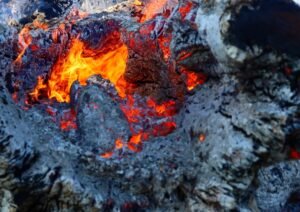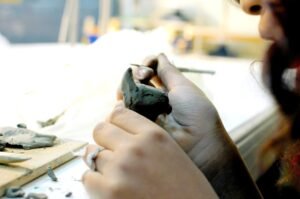Comprehensive Guide of Massage Therapy
Overview
Massage therapy is a holistic practice that involves the manipulation of soft tissues in the body to enhance a person’s health and well-being. This hobby not only serves as a means of relaxation but also promotes physical and mental health benefits. Techniques can vary widely, including Swedish, deep tissue, sports, and aromatherapy massage, each offering unique approaches to relieving tension and pain. Many individuals find joy in learning the art of massage, as it allows them to connect with others, provide comfort, and improve their own understanding of human anatomy and physiology. Additionally, massage therapy can be a therapeutic outlet, helping practitioners to develop mindfulness and a deeper awareness of their own bodies.
History
The practice of massage therapy dates back thousands of years, with roots in ancient civilizations such as China, Egypt, and Greece. Historical texts indicate that the Chinese used massage as early as 3000 BC, while the Egyptians incorporated it into their healing practices around 2500 BC. In ancient Greece, Hippocrates, often referred to as the father of medicine, advocated for the use of massage to treat various ailments. Over the centuries, massage techniques have evolved, influenced by cultural practices and advancements in medical knowledge. In the 19th century, the modern practice of massage therapy began to take shape, with the establishment of schools and formal training programs, leading to its recognition as a legitimate therapeutic profession.
Popularity and Demographics
Massage therapy has gained significant popularity in recent years, appealing to a diverse demographic that includes individuals seeking relaxation, pain relief, and overall wellness. According to the American Massage Therapy Association, approximately 18 million adults in the United States received a massage in the past year, with a growing trend among younger generations who prioritize self-care and holistic health practices. The demographic of massage therapy clients is broad, encompassing various age groups, genders, and backgrounds. Additionally, the rise of wellness culture and the increasing awareness of the benefits of massage have led to its integration into various settings, including spas, wellness centers, and even corporate environments, making it more accessible to the general public.
Sponsored Hobbyists and Vendors
Become a Sponsor!
Affiliate Disclaimer: Throughout some sections below, Hobby Spotlight may suggest some tools, equipment or material using affiliate links. By purchasing any of those items, Hobby Spotlight may earn a small commission. This helps fund our website, content and services without directly charging our users.
Getting Started
Essential Massage Tools:
Beginner
- Massage Oil: Essential oil for relaxation and smooth massage.
- Massage Table: Portable massage table for comfortable client positioning.
- Massage Balls: Small balls for targeted muscle relief and trigger point therapy.
- Towels: Soft towels for draping and comfort during sessions.
- Anatomy Chart: Visual reference for muscle groups and anatomy.
Intermediate
- Hot Stone Set: Set of smooth stones for hot stone massage therapy.
- Massage Gun: Percussion device for deep tissue massage and muscle recovery.
- Essential Oil Diffuser: Device to disperse essential oils for aromatherapy.
- Massage Cupping Set: Cups for cupping therapy to relieve muscle tension.
- Massage Therapy Book: Comprehensive guide on techniques and practices in massage therapy.
Basic Requirements and Initial Setup:
- Designated Space: A quiet, comfortable area with enough room for a massage table or mat, ensuring privacy and relaxation for clients.
- Massage Table or Mat: A sturdy, adjustable massage table or a comfortable mat is essential for providing effective treatments and ensuring client comfort.
- Essential Oils and Lotions: High-quality massage oils, lotions, or creams enhance the experience, providing glide and nourishment to the skin.
Fundamental Skills to Learn:
- Anatomy Knowledge: Understanding human anatomy, including muscles, bones, and pressure points, is crucial for effective massage therapy.
- Techniques and Modalities: Familiarity with various massage techniques (e.g., Swedish, deep tissue, sports) allows for tailored treatments based on client needs.
- Client Communication: Effective communication skills help in understanding client preferences, concerns, and feedback during sessions.
- Body Mechanics: Proper body mechanics prevent injury to the therapist and ensure effective application of techniques.
- Relaxation Techniques: Learning how to create a calming environment and use breathing techniques enhances the overall experience for clients.
Sub-Hobby/Common Activities:
- Swedish Massage: A gentle form of massage using long strokes, kneading, and circular movements to promote relaxation.
- Deep Tissue Massage: Focuses on deeper layers of muscle and connective tissue, often used for chronic pain relief.
- Sports Massage: Tailored for athletes, this technique helps prevent injuries and improve performance through targeted muscle work.
- Hot Stone Massage: Involves the use of heated stones placed on specific points of the body to enhance relaxation and relieve tension.
- Aromatherapy Massage: Combines massage with essential oils to promote physical and emotional well-being.
Terminology:
- Effleurage: A light, gliding stroke used to begin and end a massage, promoting relaxation.
- Petrissage: A kneading technique that involves lifting and squeezing the muscles to improve circulation.
- Trigger Points: Specific areas of muscle that are hyperirritable and can cause pain in other areas of the body.
- Myofascial Release: A technique that targets the fascia (connective tissue) to relieve tension and pain.
- Reflexology: A practice that involves applying pressure to specific points on the feet, hands, or ears to promote healing in other parts of the body.
- Contraindications: Conditions or factors that may prevent a massage from being performed safely.
- Palpation: The technique of using hands to feel the body’s tissues and identify areas of tension or discomfort.
- Hydration: The importance of drinking water before and after a massage to help flush out toxins released during the session.
- Posture: The alignment of the body during a massage, which affects both the therapist’s and client’s comfort.
- Session Duration: The length of time allocated for a massage, typically ranging from 30 to 90 minutes.
Advanced Topics and Specializations
Advanced Tools and Equipment:
- Electric Massage Table: A high-quality, adjustable electric massage table that provides comfort and ease of use for professional massage therapy.
- Massage Gun: A powerful percussive therapy device designed to relieve muscle tension and soreness, ideal for deep tissue massage.
- Hot Stone Massage Set: A complete set of smooth, heated stones used for therapeutic massage, promoting relaxation and muscle relief.
- Essential Oil Diffuser: A high-capacity diffuser that disperses essential oils into the air, enhancing the massage experience with aromatherapy.
- Massage Therapy Books: Comprehensive guides on advanced techniques and theories in massage therapy, suitable for professional development.
Advanced Projects and Achievements:
- Certification in Advanced Techniques: Completing specialized training programs in modalities such as deep tissue, sports massage, or myofascial release to enhance therapeutic skills.
- Establishing a Wellness Practice: Creating a successful massage therapy business that integrates holistic health practices and personalized treatment plans for clients.
- Community Wellness Workshops: Organizing and leading workshops that educate the public on the benefits of massage therapy and self-care techniques.
Advanced Techniques and Methods:
- Trigger Point Therapy: Identifying and releasing tight areas within muscle tissue to alleviate pain and improve function.
- Myofascial Release: Applying gentle sustained pressure to the connective tissue to eliminate pain and restore movement.
- Neuromuscular Therapy: Focusing on the relationship between the nervous system and muscular pain to provide targeted relief.
Specializations and Niche Areas:
- Sports Massage: Tailoring techniques to enhance athletic performance, prevent injuries, and aid recovery.
- Pregnancy Massage: Providing safe and effective treatments for expectant mothers to alleviate discomfort and promote relaxation.
- Oncology Massage: Adapting techniques to support individuals undergoing cancer treatment, focusing on comfort and relaxation.
- Chair Massage: Offering quick, effective treatments in corporate or event settings to relieve stress and tension.
- Holistic Massage Therapy: Integrating various modalities and wellness practices to address the mind, body, and spirit.
Future Trends and Innovations:
- Increased focus on mental health and wellness, with massage therapy being recognized as a complementary treatment.
- Integration of technology in practice, such as virtual consultations and online booking systems.
- Growing popularity of mobile massage services that provide convenience and accessibility to clients.
- Emphasis on personalized treatment plans based on individual client needs and preferences.
- Expansion of research supporting the benefits of massage therapy in various health conditions.
Technology Integrations:
- Online Booking Systems: Streamlining appointment scheduling and client management through user-friendly platforms.
- Telehealth Services: Offering virtual consultations and follow-up sessions to enhance client care.
- Wearable Technology: Utilizing devices that track muscle tension and stress levels to inform treatment approaches.
- Massage Therapy Apps: Providing clients with access to self-massage techniques and wellness resources.
- Virtual Reality Relaxation: Incorporating VR experiences to enhance relaxation during massage sessions.
Further Learning and Resources
Books:
- The Complete Guide to Massage by Mary Biancalana: An accessible introduction to the art of massage, covering basic techniques and principles for those new to the practice.
- Massage Therapy: Principles and Practice by Susan G. Salvo: A comprehensive resource that provides foundational knowledge and techniques for beginners in massage therapy.
- Deep Tissue Massage: A Visual Guide to Techniques by Art Riggs: An in-depth exploration of advanced deep tissue techniques, ideal for those looking to enhance their massage skills.
- The Anatomy of Massage by Andrew Biel: A detailed examination of human anatomy as it relates to massage therapy, perfect for advanced practitioners seeking to deepen their understanding.
Websites:
- American Massage Therapy Association (AMTA), https://www.amtamassage.org – A professional organization providing resources, research, and advocacy for massage therapists.
- Massage Magazine, https://www.massagemagazine.com – Offers articles, news, and resources related to massage therapy and wellness.
- Massage Therapy Journal, https://www.amtamassage.org/publications/massage-therapy-journal.html – A peer-reviewed journal featuring research and articles on massage therapy practices.
- International Massage Association, https://www.internationalmassageassociation.com – Provides information on massage therapy education, certification, and professional development.
- Massage Therapy Foundation, https://www.massagetherapyfoundation.org – Focuses on advancing the knowledge and practice of massage therapy through research and education.
Courses:
- AMTA Massage Therapy Certification Program, https://www.amtamassage.org/education/certification.html – Comprehensive program for aspiring massage therapists, covering essential techniques and practices.
- Udemy Massage Therapy Courses, https://www.udemy.com/courses/search/?q=massage%20therapy – A variety of courses for beginners to advanced practitioners, focusing on different massage techniques.
- Coursera Massage Therapy Specialization, https://www.coursera.org/specializations/massage-therapy – Offers a series of courses that cover the fundamentals and advanced techniques in massage therapy.
- Skillshare Massage Techniques Classes, https://www.skillshare.com/browse/massage – Project-based classes that teach various massage techniques and practices for all skill levels.
- National Holistic Institute Massage Therapy Program, https://nhi.edu – Offers a comprehensive massage therapy program with hands-on training and holistic approaches.
Content Creators and Community
Content Creators:
- Heather McCulloch (YouTube): A licensed massage therapist sharing techniques, tips, and tutorials for various massage styles, focusing on self-care and wellness.
- Jessica McKinney (Instagram): A massage therapist who shares insights on techniques, client experiences, and wellness tips through engaging visuals and stories.
- Jason D. Smith (YouTube): Offers educational content on anatomy, massage techniques, and professional development for aspiring massage therapists.
- Jessie Lee (TikTok): Known for quick, informative videos demonstrating massage techniques and tips for relaxation and stress relief.
- Massage Therapy 101 (Facebook): A community page where massage therapists share resources, articles, and discussions about techniques and industry news.
- Massage Therapy School (YouTube): Provides comprehensive tutorials and educational content for students and professionals in the massage therapy field.
- Therapeutic Massage (Instagram): Focuses on the benefits of therapeutic massage, sharing client testimonials, techniques, and wellness advice.
Online Forums and Social Media Groups:
- Reddit – /r/Massage: A community for sharing experiences, techniques, and advice related to massage therapy.
- Facebook Massage Therapy Groups: Various groups where professionals and enthusiasts discuss techniques, share resources, and support each other.
- Massage Therapy Network (LinkedIn): A professional network for massage therapists to connect, share job opportunities, and discuss industry trends.
- Instagram Hashtags (#MassageTherapy, #Wellness): Follow trending posts and discover new techniques and wellness tips shared by practitioners.
- Pinterest Boards: Explore boards dedicated to massage techniques, self-care tips, and wellness practices curated by massage enthusiasts.
Local Clubs and Organizations:
- Local Massage Therapy Associations: Many regions have associations that offer networking opportunities, workshops, and resources for massage therapists.
- Culinary and Wellness Festivals: Often feature workshops and demonstrations related to massage therapy and holistic wellness.
- Community Health Centers: Frequently host classes and workshops on massage techniques and self-care practices.
- Meetup Groups: Platforms like Meetup.com host local gatherings for massage enthusiasts to share techniques and experiences.
- Massage Schools: Many schools offer community classes and workshops open to the public for learning basic massage techniques.
Events, Meetups, and Conventions:
- Massage Therapy Conferences: Annual events that bring together professionals for workshops, networking, and learning about the latest techniques and research.
- Wellness Expos: Events that feature various wellness practices, including massage therapy demonstrations and workshops.
- Local Health Fairs: Often include massage therapy booths offering free or discounted sessions and educational materials.
- Workshops at Holistic Health Retreats: Opportunities to learn about massage therapy in a relaxing environment, often led by experienced practitioners.
- Massage Competitions: Events where therapists showcase their skills and techniques, often accompanied by workshops and networking opportunities.
Associated Hobbies
- Yoga: Yoga complements massage therapy by promoting relaxation and flexibility. Practicing yoga can enhance the benefits of massage, helping individuals to release tension and improve overall well-being.
- Chiropractic Care: Many massage therapists collaborate with chiropractors to provide comprehensive care. Understanding chiropractic techniques can enhance a therapist’s ability to address musculoskeletal issues.
- Holistic Health Practices: Exploring holistic approaches, such as aromatherapy or herbal medicine, can enrich a massage therapist’s practice, offering clients a more integrated approach to health and wellness.
- Physical Fitness: Engaging in physical fitness activities, such as weight training or cardio, can help massage therapists maintain their own physical health, ensuring they can provide effective treatments without injury.
- Mindfulness and Meditation: Practicing mindfulness and meditation can enhance a therapist’s ability to create a calming environment for clients, improving the overall massage experience and promoting mental well-being.
- Bodywork Techniques: Learning various bodywork techniques, such as reflexology or acupressure, can expand a massage therapist’s skill set, allowing them to offer a wider range of services to clients.
- Client Education: Educating clients about self-care practices, such as stretching or posture correction, can empower them to take an active role in their health, enhancing the benefits of massage therapy.
- Art and Creativity: Many massage therapists find creative outlets in art, whether through painting, drawing, or crafting. This creativity can help reduce stress and enhance their ability to connect with clients on a personal level.
Cost and Budgeting
Initial Investment and Ongoing Costs:
- Initial Investment: To start a career or hobby in massage therapy, the initial investment can vary significantly based on training and equipment. Basic training programs can range from $3,000 to $10,000, depending on the length and depth of the course. Additionally, purchasing essential equipment such as a massage table, linens, and oils can cost between $200 and $1,000.
- Ongoing Costs: Ongoing costs may include continuing education courses, which can range from $100 to $500 annually, as well as supplies like oils, lotions, and linens that need to be replenished regularly. If operating a business, costs for liability insurance, marketing, and rental space should also be considered, which can add several hundred to thousands of dollars per year.
Budget-Friendly Options:
- Community Colleges: Many community colleges offer affordable massage therapy programs that provide quality education at a lower cost compared to private institutions.
- Used Equipment: Consider purchasing second-hand massage tables and supplies from online marketplaces or local classifieds, which can significantly reduce initial costs.
- DIY Supplies: For those starting out, making your own massage oils or using household items like towels instead of expensive linens can help keep costs down.
Where to Buy:
- Massage Supply Stores: Specialized stores offer a wide range of massage tables, oils, and accessories tailored for massage therapists.
- Online Retailers: Websites like Amazon and Massage Warehouse provide a variety of massage supplies, often at competitive prices, with the convenience of home delivery.
- Local Health and Wellness Expos: Attending expos can provide opportunities to purchase equipment at discounted rates and learn about new products in the industry.
Money Making
How to Turn the Hobby into a Profession or Side Hustle:
- Licensed Massage Therapist: Obtain the necessary certifications and licenses to practice as a professional massage therapist. This involves completing a massage therapy program and passing state exams. You can work in spas, wellness centers, or even start your own practice, providing therapeutic massages to clients seeking relaxation and pain relief.
- Mobile Massage Services: Start a mobile massage business where you travel to clients’ homes or offices to provide massage therapy. This convenience can attract busy professionals and those who prefer the comfort of their own space. Invest in portable massage equipment and market your services through social media and local advertising.
- Massage Therapy Workshops: Share your knowledge by conducting workshops or classes on massage techniques. You can teach basic massage skills to individuals or groups, focusing on relaxation techniques, self-massage, or specific modalities like Swedish or deep tissue massage. This can be a great way to earn extra income while helping others learn valuable skills.
- Online Massage Courses: Create and sell online courses that teach various massage techniques or wellness practices. This can include video tutorials, instructional materials, and live Q&A sessions. By leveraging platforms like Udemy or your own website, you can reach a global audience and generate passive income from your expertise.
- Massage Products Retail: If you have a passion for wellness products, consider starting a retail business that sells massage-related items such as oils, lotions, massage tools, and equipment. You can create an online store or partner with local health and wellness shops to offer your products, catering to both massage therapists and individuals looking to enhance their home massage experience.
Benefits and Enjoyment
Physical, Mental, and Social Benefits:
- Physical Relief: Massage therapy is known for its ability to alleviate muscle tension, reduce pain, and improve circulation. Regular sessions can help with recovery from injuries and enhance overall physical well-being.
- Mental Relaxation: The soothing nature of massage therapy promotes relaxation and reduces stress levels. It can help lower anxiety and improve mood by releasing endorphins, leading to a greater sense of mental clarity and emotional balance.
- Social Connection: Engaging in massage therapy can foster connections between therapists and clients, creating a supportive environment. Additionally, group classes or workshops can enhance social interactions and build a community around wellness.
Success Stories and Inspirational Examples:
- Dr. Tiffany Field: A pioneer in the field of massage therapy research, Dr. Field has conducted extensive studies demonstrating the benefits of massage for various populations, including infants and patients with chronic illnesses. Her work has helped legitimize massage therapy in the medical community.
- Ben Benjamin: An influential figure in the massage therapy world, Ben Benjamin has authored several books and developed training programs that have educated countless therapists. His dedication to advancing the profession has inspired many to pursue careers in massage therapy.
- Jill Miller: As a co-founder of Yoga Tune Up, Jill Miller has integrated massage therapy techniques into yoga practices. Her innovative approach has helped many individuals enhance their physical health and body awareness, showcasing the versatility of massage therapy.
Ways to Enjoy and Grow in the Hobby:
- Take Courses and Workshops: Enroll in massage therapy courses or workshops to deepen your knowledge and skills. Learning new techniques and modalities can enhance your practice and keep your sessions fresh and exciting.
- Practice Self-Care: Incorporate self-massage techniques into your routine to experience the benefits firsthand. This practice not only helps you understand the techniques better but also promotes your own well-being.
- Join a Community: Connect with other massage therapy enthusiasts through local groups or online forums. Sharing experiences, tips, and resources can enrich your understanding and enjoyment of the hobby.
Challenges and Solutions
Common Challenges Faced by Hobbyists:
- Physical Strain: Practicing massage therapy can lead to physical strain, particularly on the hands, wrists, and back. Over time, repetitive motions can cause discomfort or injury, making it essential for hobbyists to be aware of their body mechanics.
- Finding Clients: For those pursuing massage therapy as a hobby, finding clients can be challenging. Many hobbyists may struggle to market their services effectively or may not have a steady stream of clients, which can be discouraging.
- Legal and Ethical Considerations: Engaging in massage therapy, even as a hobby, may require knowledge of local laws and regulations. Understanding the legalities surrounding massage practice is crucial to avoid potential issues.
Tips for Overcoming These Challenges:
- Practice Proper Techniques: Invest time in learning proper massage techniques and body mechanics to minimize physical strain. Consider taking workshops or online courses to enhance your skills and reduce the risk of injury.
- Build a Network: Connect with friends, family, and local community members to find potential clients. Offering free or discounted sessions initially can help build a client base and gain valuable experience.
- Stay Informed: Research local regulations regarding massage therapy to ensure compliance. Joining professional organizations can provide resources and support for understanding legal and ethical considerations.
Safety Considerations and Best Practices:
- Always maintain a clean and hygienic environment for massage therapy to prevent the spread of germs and ensure client safety.
- Use appropriate draping techniques to respect client privacy and comfort during sessions.
- Communicate openly with clients about their comfort levels and any areas of concern before starting a massage.
- Be aware of any medical conditions or contraindications that may affect the massage, and adjust techniques accordingly.
- Continuously educate yourself on best practices and new techniques in massage therapy to enhance your skills and provide the best experience for clients.
Conclusion and Encouragement
Recap of Key Points:
- Massage therapy is a holistic practice that promotes relaxation, reduces stress, and alleviates pain through various techniques such as Swedish, deep tissue, and sports massage.
- It is beneficial for both physical and mental health, helping to improve circulation, enhance flexibility, and boost overall well-being.
- Massage therapy can be tailored to individual needs, making it suitable for people of all ages and fitness levels, whether for relaxation or rehabilitation.
- Regular sessions can lead to long-term health benefits, including improved sleep quality, reduced anxiety, and enhanced immune function.
- Learning basic massage techniques can be a rewarding skill, allowing you to provide comfort and relief to friends and family while deepening your understanding of body mechanics.
Encouragement to Start and Enjoy the Hobby:
- Massage therapy is an accessible hobby that can be practiced at home with minimal equipment. You can start by learning simple techniques to help relieve tension in yourself and others.
- It offers a unique opportunity to connect with others on a deeper level, as providing a massage can foster trust and intimacy, enhancing relationships.
- Exploring massage therapy can lead to personal growth and self-discovery, as you learn to listen to your body and understand the importance of self-care and relaxation.
Final Tips and Motivational Thoughts:
- Always prioritize safety and comfort when practicing massage. Ensure that the environment is relaxing and that the person receiving the massage feels at ease.
- Continue to educate yourself about different techniques and the anatomy of the body. This knowledge will enhance your skills and deepen your appreciation for the art of massage.
- Remember that the journey of learning massage therapy is ongoing. Celebrate your progress, and don’t hesitate to seek feedback from those you practice on to improve your technique.

















